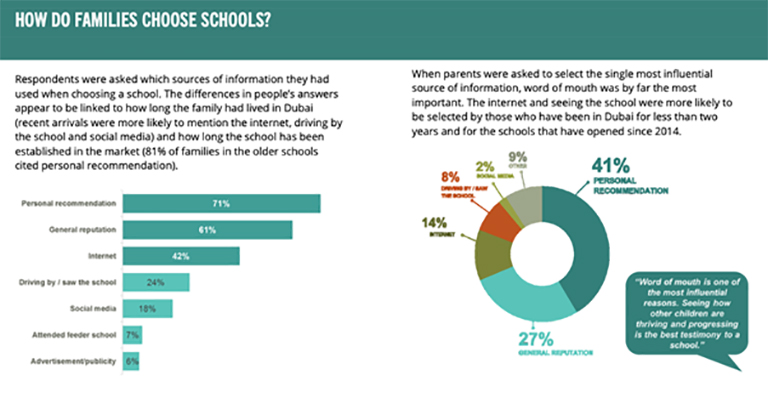Justifications for KHDA rankings

How to use the KHDA school Rankings
We must firstly realise that there are two principle justifications for KHDA rankings, one based on notions of institutional accountability and the other on their use for making choices between schools. What we also know is that the KHDA Inspection rankings are eagerly scanned by parents hoping to find the best school in Dubai for their child, and it is also used by private school owners, school leaders and teachers hoping to see their school rise in the rankings. But do they tell parents what they need to know?
When the results for schools are released by KHDA each year they are widely published and are used by schools in their promotional literature. Private schools seen to be high or low in the rankings are often singled out for praise or condemnation; the implicit assumption is that the position in the rankings can be treated as a measure of the quality of their educational provision. How justified is that assumption? And how useful are they in practice, both to an authority seeking out strong or weak schools and to a parent seeking the best school for their child?
The current rankings which have not changed since the inception of Covid -19 for 2-3 Inspection cycles depending if the school was inspected just before March 2020 or they missed that cycle. This has left schools floundering on the pre-covid rating for at least two years. I would argue that schools have indeed improved substantially during this period and the two mini-inspections (KHDA Distance Learning Evaluation 2020; DSIB Virtual visit for Students of Determination – selected schools) support that most schools did not stagnate during the pandemic.
These current rankings are used by the official school inspection system (DSIB) to inform their judgements, and also as part of a screening system to identify those “outlying” institutions that may need to be closed. The interesting aspect of such “internal accountability” systems is that they treat the rankings as just one source of evidence about potential problems to be further investigated rather than as definitive statements about the quality of education within the institutions. Clearly, then, education officials do not regard rankings on their own as strong enough evidence for a judgement.
Yet the first point of contact for choosing a school in Dubai is the KHDA rankings. The parents, access to this data is typically through the tables published on the KHDA website or in the media. Yet, when making a choice of school the same issues occur as when the tables are used for accountability purposes. The relevant question for a parent is whether, given the characteristics of their child, any particular school can be expected to produce better subsequent achievements than any other chosen school.
Parents believe that KHDA rankings are the best way to judge a school’s success (don’t they?)
Table 1.0

In table 1.0 the survey shows 61% of parents rely on the school’s general reputation which the easiest way to ascertain for new parents is through the KHDA ranking which is also available to the 41% of parents who gain their information from the internet. So, unless parents spend the time to truly immerse themselves in the school of their choice the KHDA ranking is the most trusted and convenient source to inform their choice. For many private schools this is high stakes indeed.
Studies in both Australia and United Kingdom show that rankings are dominated by schools which educate more affluent, high-attaining pupils. Not surprisingly, schools with their predominantly middle-class intake, rank among the highest. Schools at the bottom of the rankings tend to be in areas of high social deprivation. In short, the moment school rankings are published schools which face the most challenging circumstances are shamed, while celebrating those with the relatively easy task of educating already high-attaining, middle-class children.
Even exam results reveal nothing about the character of the school’s pupil population, and the many social and economic factors which impact on children’s attainment. Like all good sales pitches, school rankings give only one side of the story. Unless you know where to look and have the skills to interpret the data, there is nothing to tell you the percentages of pupils with extra support or identified special needs. Yet all schools are graded by the same criteria, as if the baseline was the same for every child.
KHDA rankings could be said to be a snapshot of the quality of a school; a grade which represents every lesson, each extra pastoral support meeting and the blood, sweat and tears of every teacher and pupil within a school over the past 12 months. But can any judgement that comes down to one word ever represent all of these elements of the best fit school for a child?
At Springdales we are already ranked in the GOOD category and we are working hard to get to the next step of being ranked as a VERY GOOD school. We often tell parents the difference between us and other institution’s is the quality of the teaching and learning process, and the “feel” of our school is uniquely special. I know this is true today and it will continue to be true even if our ranking goes up or down at the next inspection.
Dr. Brian Gray
Principal
Springdales School, Dubai


